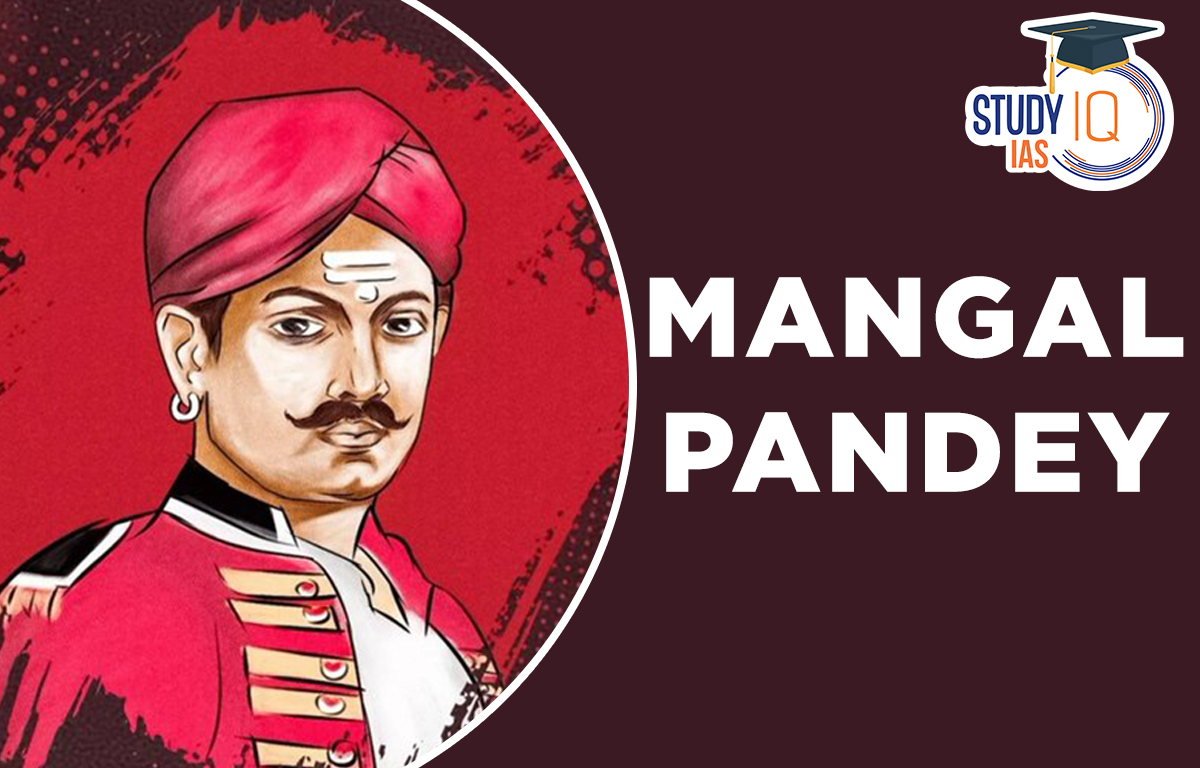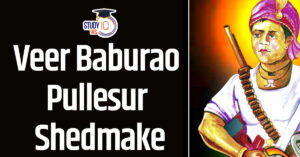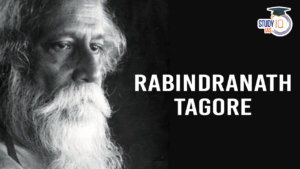Table of Contents
Mangal Pandey, a name synonymous with bravery and rebellion, played a pivotal role in the Indian Rebellion of 1857. Often referred to as the “Sepoy Mutiny” or “India’s First War of Independence,” this uprising marked the beginning of a significant resistance against British colonial rule in India.
Biography of Mangal Pandey
Mangal Pandey was born on July 19, 1827, in the village of Nagwa, located in the Ballia district of what is now Uttar Pradesh, India. He hailed from a prosperous, high-caste Brahmin family with strong Hindu beliefs. His birth anniversary, known as his Jayanti, is celebrated annually on July 19.
| Overview | |
| Full Name | Mangal Pandey |
| Birth Date | July 19, 1827 |
| Place of Birth | Nagwa, Ballia District, Uttar Pradesh, India |
| Occupation | Sepoy (Soldier) in the British East India Company |
| Significance | Catalyzed the Indian Rebellion of 1857 (First War of Independence) |
| Known For | Sparking the Barrackpore Mutiny |
| Death Date | April 8, 1857 |
| Place of Death | Barrackpore, Bengal Presidency, British India |
| Cause of Death | Execution by hanging |
| Legacy | Symbol of Indian resistance against British rule |
| Join Us on WhatsApp | Click to Join |
Mangal Pandey Military Career
In 1849, Mangal Pandey joined the Bengal Army, the military force of the Bengal Presidency, one of the three major British presidencies in India. By March 1857, he was serving as a private soldier in the 5th Company of the 34th Bengal Native Infantry (BNI) regiment of the British East India Company. This regiment included many Brahmin soldiers, who were particularly aggrieved by the British policies.
Joining the Bengal Army
In 1849, Mangal Pandey joined the Bengal Army, a segment of the British East India Company’s military forces. By March 1857, he was serving as a private soldier (sepoy) in the 5th Company of the 34th Bengal Native Infantry. His regiment was stationed at Barrackpore, where growing discontent among the Indian soldiers was palpable.
The Spark of Rebellion
On the afternoon of March 29, 1857, Lieutenant Baugh, the adjutant of the 34th Bengal Native Infantry, was informed of the unrest among his soldiers. He learned that Mangal Pandey was inciting his fellow sepoys to revolt and threatening to shoot the first European he encountered. Pandey, armed and pacing in front of the regiment’s guardroom near the parade area, was visibly agitated.
According to testimony from a subsequent inquiry, Pandey’s discontent was fueled by his opposition to the new Enfield rifle cartridges, rumored to be greased with cow and pig fat. These rumors deeply offended both Hindu and Muslim soldiers. As British soldiers disembarked from a ship near the cantonment, Pandey seized his weapons and headed to the quarter-guard building, further inciting his comrades.
Role in Revolt of 1857
The introduction of the Enfield rifle in the 1850s, with its cartridges that had to be bitten off at the ends, sparked widespread anger among Indian soldiers. Hindus revered cows, and Muslims considered pigs unclean, making the use of these cartridges unacceptable. Mangal Pandey, a devout Hindu Brahmin, was particularly incensed and decided to take a stand.
On March 29, 1857, as Lieutenant Baugh learned of the brewing mutiny, he discovered that Pandey was leading the charge. Pandey’s threats and actions aimed to inspire his fellow sepoys to rebel against their British officers. He even went so far as to threaten to shoot the first European he saw.
The Confrontation
General Hearsey, the commanding officer, quickly became aware of the situation and rode to the scene with his two sons. To restore order, Hearsey drew his revolver and commanded the sepoys to return to their duties, threatening to shoot anyone who disobeyed. As the sepoys hesitated, Pandey attempted to take his own life. He placed the musket’s muzzle to his chest and pulled the trigger with his toe, but the wound was not fatal. He was subsequently arrested, marking the beginning of his transformation into a martyr for India’s fight for independence.
Death of Mangal Pandey
Mangal Pandey was executed by hanging on April 8, 1857, after inciting a rebellion against British authorities. His defiance was sparked by the introduction of the Enfield rifle cartridges, rumored to be greased with cow and pig fat, which offended Indian soldiers’ religious beliefs. On March 29, 1857, Pandey openly encouraged his fellow sepoys to rise against their British officers, leading to his arrest after a failed suicide attempt.
Court-martialed and found guilty of mutiny, Pandey’s execution became a catalyst for the Indian Rebellion of 1857. His actions symbolized resistance against British rule and inspired widespread defiance. Today, he is celebrated as a national hero, remembered for his bravery and sacrifice. Pandey’s legacy continues to inspire generations, immortalized in literature, films, and songs as a significant figure in India’s struggle for independence.


 Jyotiba Phule Biography, Facts and Socia...
Jyotiba Phule Biography, Facts and Socia...
 Veer Baburao Pullesur Shedmake: The Forg...
Veer Baburao Pullesur Shedmake: The Forg...
 Rabindranath Tagore Biography: Life, Ach...
Rabindranath Tagore Biography: Life, Ach...





















